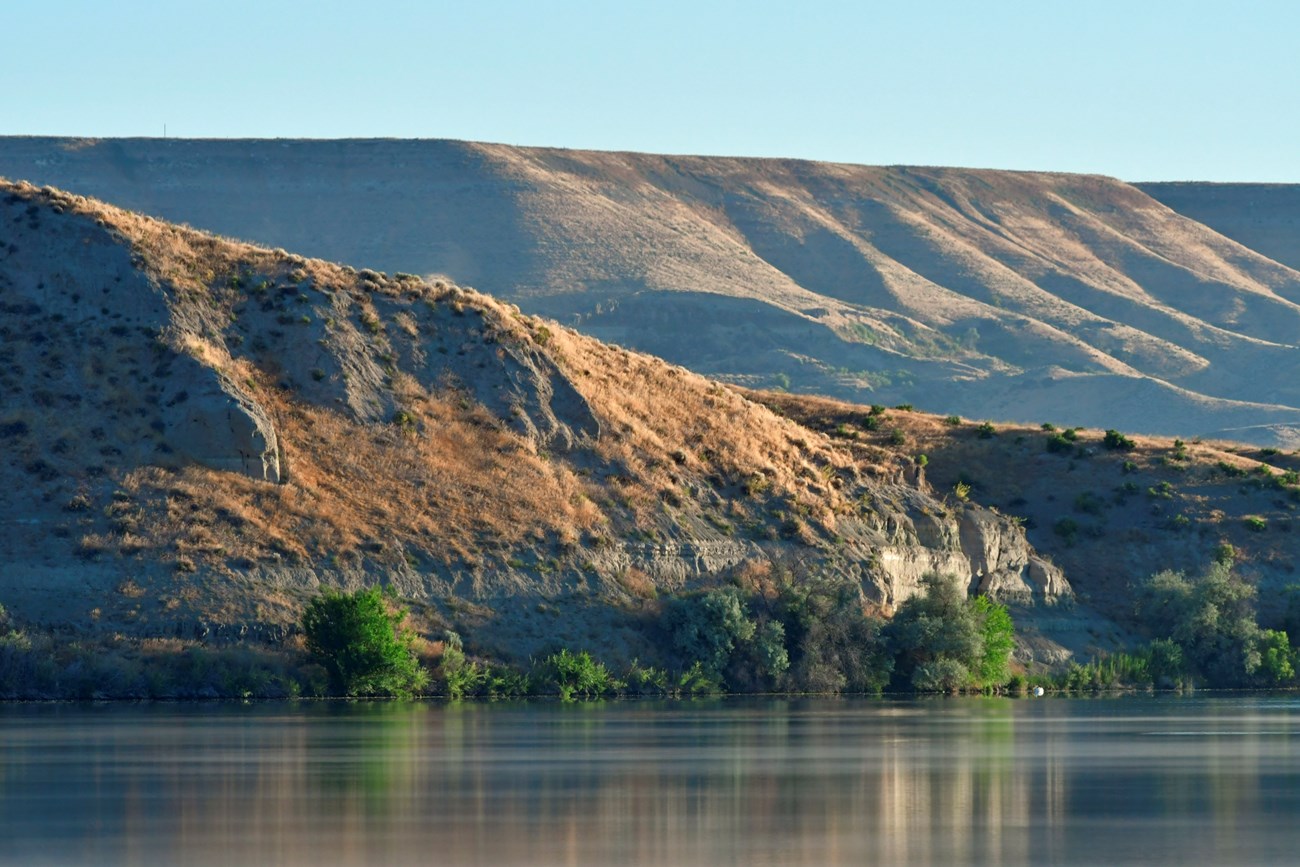
NPS Photo
Environmental Setting
Known mostly for its fossils from the Pliocene epoch, Hagerman Fossil Beds National Monument contains one of the world's richest known deposits of the fossil horse Equus simplicidens.
In 1988, the Hagerman horse became Idaho's state fossil and Hagerman Fossil Beds became a national monument. The monument contains the Hagerman Horse Quarry, a national natural landmark. Hagerman Fossil Beds is nationally and internationally significant for its world-class paleontological resources.
The monument's paleontological resources are contained in a continuous, undisturbed stratigraphic record spanning at least 500,000 years. The fossils deposited here appear to represent an entire paleontological ecosystem with a variety of habitats such as wetland, riparian, and grassland savanna. Most of the fossils contained in the park are not obvious. There are no hikes or observation areas to see the fossils in place. A sampling of excavated fossils is displayed in the park visitor center, while the other fossils are studied under laboratory conditions not currently visible to park visitors. Plans are underway for the park to make the laboratory work and procedures more accessible to everyone.
Key Resources and Issues
Hagerman Fossil Beds National Monument preserves significant fossil resources, including the richest known deposits of the Hagerman horse, Idaho's state fossil. The Snake River runs through the Monument, as does a portion of the Oregon Trail National Historic Trail. In addition to the fossil resources, the monument contains riparian vegetation, grassland steppe, and limited sagebrush steppe. The monument has had a varied history of land use—wild horses roamed the Hagerman Valley into the early 1900s, and the area has a long history of agricultural use. The monument staff also manages the Minidoka National Historic Site, an isolated war relocation center that housed Japanese Americans forcibly removed from the West Coast during World War II.
The primary natural resource issues are invasive plants, wildfire, and erosion. The dry grassland habitat is vulnerable to wildfire, and invasive plants such as cheatgrass have increased dramatically after past fires. Erosion concerns are associated with perched ground water systems that are recharged by water seeping from surrounding agricultural practices—excess irrigation water runoff can cause landslides and erosion that are a threat to the fossil resources. Erosion also increases fine sediment, which can accumulate downstream and degrade wetland habitat for fish, amphibians, and invertebrates.
Publications and Other Information
Inventory Reports
Source: NPS DataStore Collection 4404 (results presented are a subset). To search for additional information, visit the NPS DataStore.
Monitoring Reports
Source: NPS DataStore Saved Search 721 (results presented are a subset). To search for additional information, visit the NPS DataStore.
Quick Reads
Source: NPS DataStore Collection 4405 (results presented are a subset). To search for additional information, visit the NPS DataStore.
Last updated: August 27, 2018
